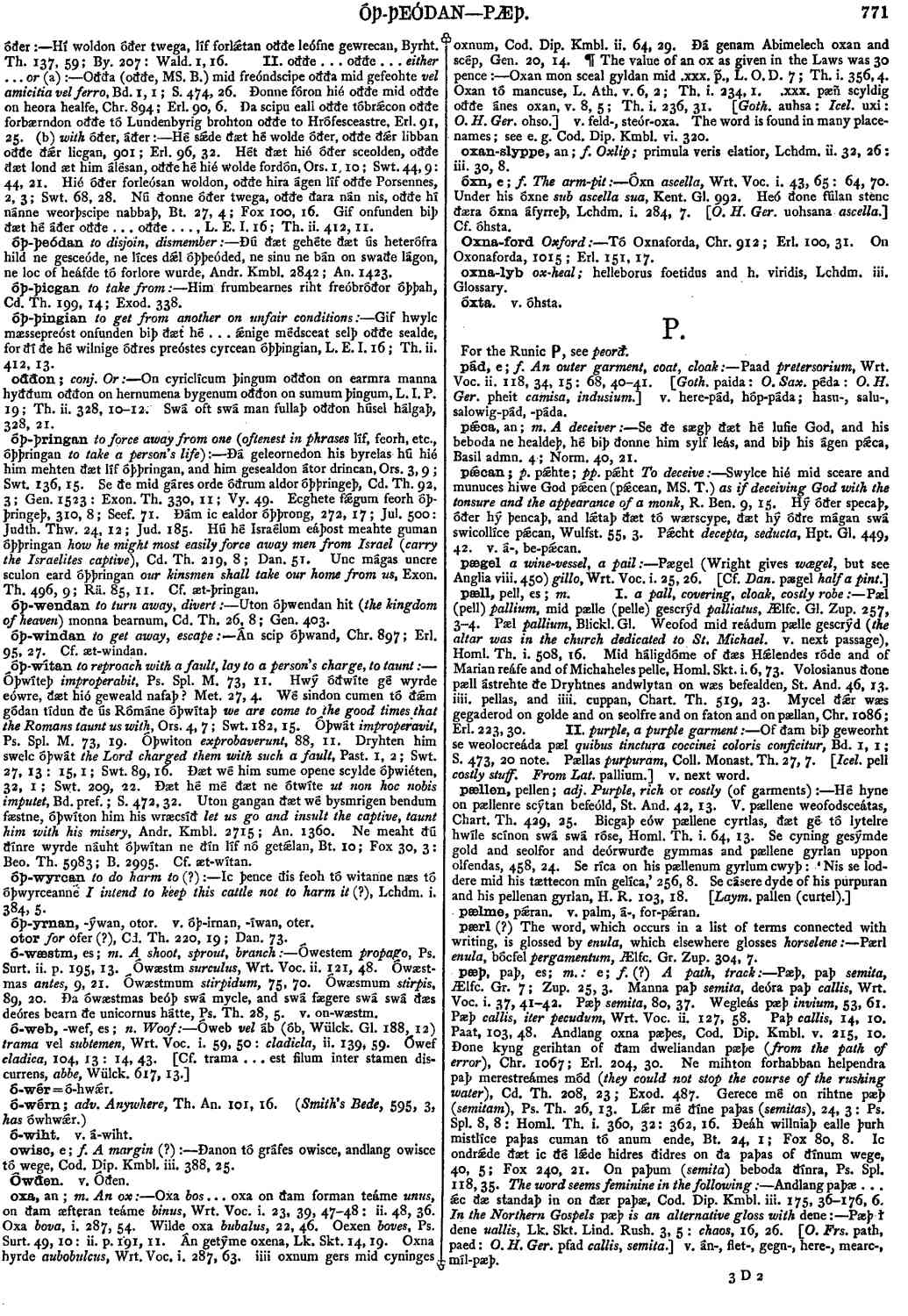pæþ
- noun [ masculinefeminine ]
-
Pæþ, paþ
semita,
- Ælfc. Gr. 7 ; Zup. 25, 3.
-
Manna paþ semita, deúra paþ
callis,
- Wrt. Voc. i. 37, 41-42.
-
Pæþ
semita,
- 80, 37.
-
Wegleás pæþ
invium,
- 53, 61.
-
Pæþ
callis, iter pecudum,
- Wrt. Voc. ii. 127, 58.
-
Paþ
callis,
- 14, 10.
-
Paat,
- 103, 48.
-
Andlang oxna pæþes,
- Cod. Dip. Kmbl. v. 215, 10.
-
Ðone kyng gerihtan of ðam dweliandan pæþe (
from the path of error
),- Chr. 1067; Erl. 204, 30.
-
Ne mihton forhabban helpendra paþ merestreámes mód (
they could not stop the course of the rushing water
),- Cd. Th. 208, 23 ; Exod. 487.
-
Gerece mé on rihtne pæþ (
semitam
),- Ps. Th. 26, 13.
-
Lǽr me ðíne paþas (
semitas
),- 24, 3: Ps. Spl. 8, 8: Homl. Th. i. 360, 32 : 362, 16.
-
Ðeáh willniaþ ealls þurh mistlíce paþas cuman tó anum ende,
- Bt. 24, 1; Fox 80, 8.
-
Ic ondrǽde ðæt ic ðé lǽðe hidres ðidres on ða paþas of ðínum wege,
- 40, 5 ; Fox 240, 21.
-
On paþum (semita) beboda ðínra, Ps. Spl. 118, 35. The word seems feminine in the following :-- Andlang paþæ ... ǽc ðæ standaþ in on ðær paþæ, Cod. Dip. Kmbl. iii. 175, 36-176, 6. In the Northern Gospels pæþ is an alternative gloss with dene :-- Pæþ ł ðene uallis, Lk. Skt. Lind. Rush. 3, 5 :
chaos,
- 16, 26.
Bosworth, Joseph. “pæþ.” In An Anglo-Saxon Dictionary Online, edited by Thomas Northcote Toller, Christ Sean, and Ondřej Tichy. Prague: Faculty of Arts, Charles University, 2014. https://bosworthtoller.com/25120.
Checked: 0